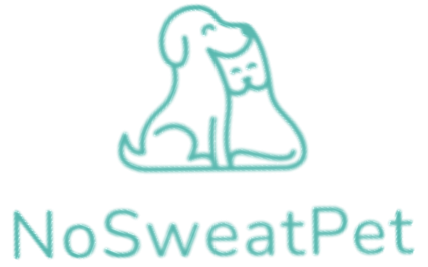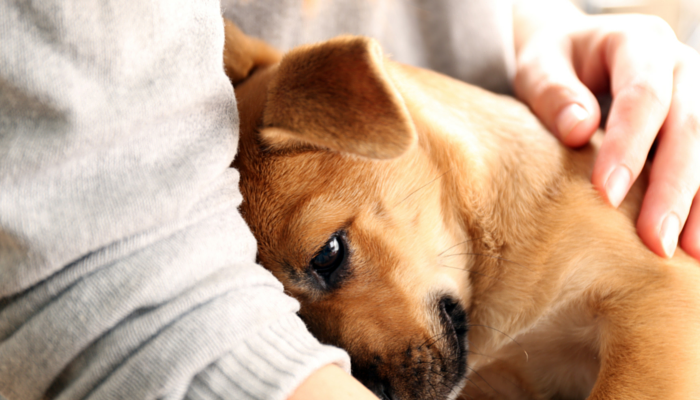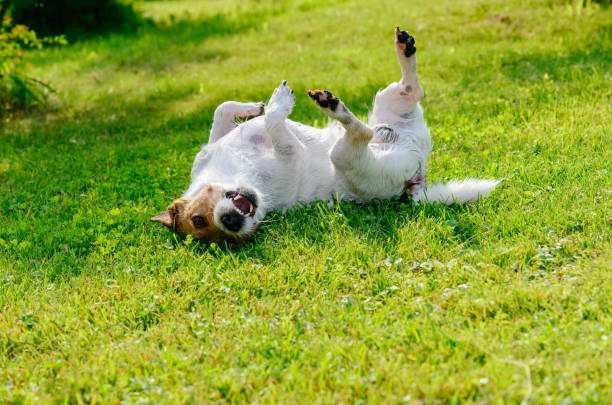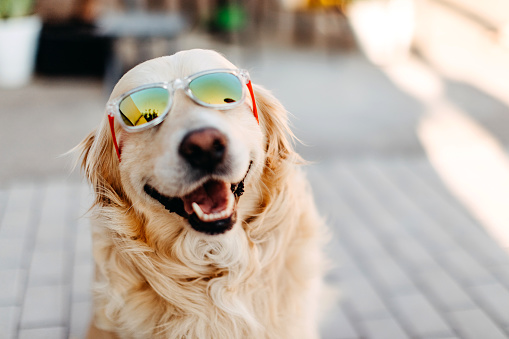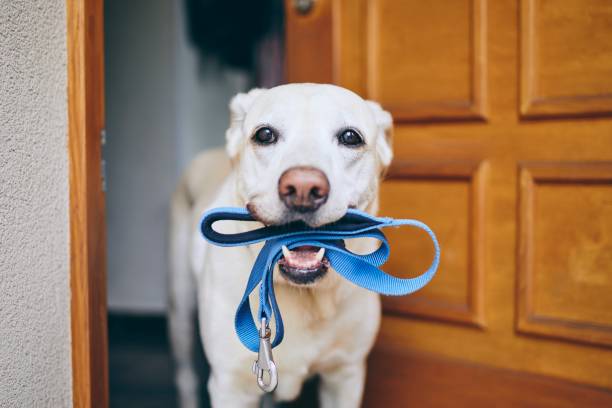Introduction:
Are you on a quest to discover the ideal dog harness for your furry companion? Look no further! In this comprehensive guide, we’ll walk you through the essential steps of measuring your dog’s neck and chest to ensure the perfect fit for a NoSweatPet harness. Our mission is to provide comfort, safety, and style for your canine friend.
The Importance of a Well-Fitted Harness:
A properly fitted harness is crucial for your dog’s well-being during walks and adventures. Unlike collars, harnesses distribute pressure evenly across the chest and shoulders, reducing the risk of injury or discomfort. NoSweatPet harnesses are designed with your dog’s comfort in mind, promoting a secure and enjoyable experience for both of you.
How to Measure Your Dog’s Neck for a Harness:
- Gather a soft tape measure.
- Place the tape measure around your dog’s neck, just above the shoulders.
- Ensure a snug fit without being too tight.
- Allow enough room for two fingers between the tape measure and your dog’s neck.
- Record the measurement for reference.
Measuring Your Dog’s Chest for a Harness:
- Wrap the tape measure around the widest part of your dog’s chest, just behind the front legs.
- Ensure a snug fit without constricting your dog’s movements.
- Record the measurement, noting the circumference of the chest.
Average Dog Measurements
| Dog Breed | Average Adult Dog Chest Size | Average Adult Dog Neck Size |
| Afghan Hound | 66 - 76cm (26” - 30”) | 41-51cm (16-20") |
| Airdale Terrier | 55cm - 71cm (22” - 28”) | 41-51cm (19-22") |
| Akita | 71 - 81cm (28” - 32”) | 48-55cm (19-22") |
| Alaskan Malamute | 81 -91cm (32” - 36”) | 46-56cm (18-22″) |
| American Eskimo Miniature | 35 - 50cm (14” - 20”) | 46-56cm (18-22″) |
| American Indian Dog | 66 - 76cm (26” - 30”) | 46-56cm (18-22″) |
| American Pit Bull Terrier | 55cm - 71cm (22” - 28”) | 46-56cm (18-22″) |
| Australian Cattle Dog | 60 - 71cm (24” - 28”) | 46-56cm (18-22″) |
| Australian Kelpie | 50 - 60cm (20” - 24”) | 46-56cm (18-22″) |
| Australian Shepherd | 60 - 71cm (24” - 28”) | 41-56cm (16-22″) |
| Australian Shepherd Miniature | 50 - 60cm (20” - 24”) | 25-36cm (10-14") |
| Basenji | 50 - 60cm (20” - 24”) | 25-36cm (10-14") |
| Basset Hound | 60 - 71cm (24 - 28”) | 42-51cm (17-20″) |
| Beagle | 43 - 63cm (21” - 25”) | 41-46cm (16-18″) |
| Bedlington Terrier | 50 - 60cm (20” - 24”) | 35-45cm (14-18″) |
| Belgian Malinois | 71 - 81cm (28” - 32”) | 35-45cm (14-18″) |
| Bernese Mountain Dog | 81 - 91cm (32” - 36”) | 51-56cm (20-22") |
| Bichon Frise | 35 - 50cm (14” - 20”) | 35-46cm (14-18″) |
| Black And Tan Coonhound | 60 - 71cm (24” - 28”) | 35-46cm (14-18″) |
| Border Collie | 40 - 60cm (16” - 24”) | 41-46cm (16-18") |
| Border Terrier | 40 - 53cm (16” - 21”) | 28-33cm (11-13″) |
| Boston Terrier | 66 - 76cm (26” - 30”) | 30-45cm (12-18″) |
| Bouvier Des Flanders | 81 - 91cm (32” - 36”) | 30-45cm (12-18″) |
| Boxer | 50 - 66cm (20” - 26”) | 41-56cm (16-22″) |
| Bulldog (American) | 78 - 83cm (31” - 33”) | 46cm-61cm (18-24") |
| Bulldog (English) | 71 - 81cm (28” - 32”) | 46cm-61cm (18-24") |
| Bulldog (French) | 60 - 71cm (24” - 28”) | 46cm-61cm (18-24") |
| Bullmastiff | 81 - 91cm (32” - 36”) | 66-71cm (26-28") |
| Bull Terrier | 60 - 71cm (24” - 28”) | 46cm-61cm (18-24") |
| Bull Terrier Miniature | 60 - 71cm (24” - 28”) | 46cm-61cm (18-24") |
| Cairn Terrier | 35 - 50cm (14” - 20”) | 37-42cm (14-16″) |
| Chihuahua | 27 - 38cm (11” - 15”) | 20-32cm (8-13") |
| Chinese Crested | 35 - 50cm (14” - 20”) | 20-28cm (8-11″) |
| Chow Chow | 50 - 60cm (20” - 24”) | 50-65cm (20-26″) |
| Cocker Spaniel | 40 - 50 cm (16” - 20”) | 30-46cm (12-18″) |
| Collie | 66 - 76cm (26” - 30”) | 46-56cm (18-22") |
| Corgi | 40 - 50 cm (16” - 20”) | 36-41cm (14-16") |
| Dachshund Standard | 45 - 55 cm (18” - 22”) | 30-41cm (12-16″) |
| Dachshund Miniature | 27 - 38cm (11” - 15”) | 30-41cm (12-16″) |
| Dalmatian | 60 - 71cm (24” - 28”) | 41-50cm (16-20″) |
| Doberman | 66 - 76cm (26” - 30”) | 41-50cm (16-20″) |
| English Bulldog | 55 - 71cm (22 - 28”) | 30-46cm (18-24″) |
| English Setter | 60 - 71cm (24” - 28”) | 46-61cm (18-24″) |
| Fox Terrier | 40- 50cm (16” - 20”) | 41-45cm (16-18") |
| German Shepherd | 71 - 81cm (28” - 32”) | 46-60cm (18-24") |
| German Shorthair Pointer | 60 - 71cm (24” - 28”) | 38-43cm (15-17″) |
| Goldendoodle Miniature | 53 - 63cm (21” - 25”) | 41-56cm (16-22") |
| Goldendoodle Standard | 78 - 83cm (31” - 33”) | 41-56cm (16-22") |
| Golden Retriever | 71 - 81cm (28” - 32”) | 45-53cm (18-21") |
| Great Dane | 86 - 116cm (34” - 46”) | 51-66cm (20-26″) |
| Greyhound | 71 - 81cm (28” - 32”) | 46-50cm (18-20") |
| Greyhound Italian | 35 - 50cm (14” - 20”) | 46-50cm (18-20") |
| Havanese | 35 - 50cm (14” - 20”) | 20-30cm (8-12″) |
| Irish Terrier | 50 - 60cm (20” - 24”) | 35-45cm (14-18") |
| Irish Setter | 78 - 83cm (31” - 33”) | 41-45cm (16-18") |
| Irish Wolfhound | 81 - 91cm (32” - 36”) | 55-65cm (22-26") |
| Jack Russell Terrier | 35 - 50cm (14” - 20”) | 25-36cm (10-14″) |
| King Charles Cavalier | 40 - 50cm (16” - 20”) | 51-61cm (20-24") |
| Labrador Retriever | 86 - 91cm (34” - 36”) | 46-60cm (18-24") |
| Labradoodle | 78 - 83cm (31” - 33”) | 41-50cm (16-20") |
| Labradoodle Miniature | 53 - 63cm (21” - 25”) | 30-41cm (12-16″) |
| Lhasa Apso | 40 - 50cm (16” - 20”) | 35-45cm (14-18") |
| Maltese | 30 - 40cm (12” - 16”) | 35-42cm (14-17") |
| Newfoundland | 86 - 116cm (34” - 46”) | 66-81cm (26-32") |
| Old English Sheepdog | 76 - 86cm (30” - 34”) | 46-61cm (18-24") |
| Papillon | 35 - 50cm (14” - 20”) | 46-61cm (18-24") |
| Pekingese | 35 - 50cm (14” - 20”) | 46-61cm (18-24") |
| Pembroke Welsh Corgi | 53 - 63cm (21” - 25”) | 46-61cm (18-24") |
| Pinscher Miniature | 27 - 45cm (11” - 18”) | 46-61cm (18-24") |
| Pit Bull | 55 - 66cm (22” - 26”) | 46-61cm (18-24") |
| Pomeranian | 30 - 40cm (12” - 16”) | 35-41cm (14-16") |
| Poodle (Standard) | 55 - 71cm (22” - 28”) | 30-45cm (12-18″) |
| Poodle (Toy) | 27 - 45cm (11” - 18”) | 20-36cm (8-14″) |
| Portuguese Water Dog | 60 - 71cm (24” - 28”) | 20-36cm (8-14″) |
| Pug | 53 - 63cm (21” - 25”) | 30-41cm (12-16″) |
| Pugalier | 53 - 63cm (21” - 25”) | 30-41cm (12-16″) |
| Puggle | 53 - 63cm (21” - 25”) | 30-41cm (12-16″) |
| Rhodesian Ridgeback | 71 - 81cm (28” - 32”) | 51-58cm (20-23") |
| Rottweiler | 85 - 95cm (33” - 37”) | 61-76cm (24-30") |
| St. Bernard | 76 - 86cm (30” - 34”) | 38-66cm (15-18") |
| Schnauzer Giant | 71 - 81cm (28” - 32”) | 36-51cm (14-20″) |
| Schnauzer Standard | 53 - 63cm (21” - 25”) | 36-51cm (14-20″) |
| Schnauzer Miniature | 50 - 60cm (20” - 24”) | 36-51cm (14-20″) |
| Scottish Terrier | 50 - 60cm (20” - 24”) | 35-45cm (14-18") |
| Shar Pei | 50 - 60cm (20” - 24”) | 38-66cm (15-18") |
| Shetland Sheep Dog “Sheltie” | 71 - 81cm (28” - 32”) | 38-66cm (15-18") |
| Shiba Inu | 53 - 63cm (21” - 25”) | 38-66cm (14-16") |
| Shichon | 35 - 50cm (14” - 20”) | 38-66cm (15-18") |
| Shih Tzu | 35 - 50cm (14” - 20”) | 38-66cm (14-16.5") |
| Siberian Husky | 71 - 81cm (28” - 32”) | 38-66cm (18-20") |
| Springer Spaniel | 60 - 71cm (24” - 28”) | 38-66cm (14-18″) |
| Staffordshire Terrier | 55 - 71cm (22” - 28”) | 38-66cm (15-18") |
| Vizsla | 71 - 81cm (28” - 32”) | 38-66cm (15-18") |
| Weimaraner | 71 - 81cm (28” - 32”) | 41-56cm (16-22″) |
| West Highland Terrier | 35 - 50cm (14” - 20”) | 35-41cm (13-15″) |
| Wheaten Terrier | 53 - 63cm (21” - 25”) | 35-41cm (13-15″) |
| Whippet | 60 - 71cm (24” - 28”) | 33-38cm (13-15″) |
| Yorkshire Terrier | 27 - 45cm (11” - 18”) | 25-30cm (10-12") |
| Yorkshire Terrier (Teacup) | 27 - 38cm (11” - 15”) | 25-30cm (10-12") |
Remember, this size chart serves as a general guide. It’s essential to measure your dog accurately for the best fit. NoSweatPet offers a range of harness sizes to accommodate various breeds and sizes, ensuring that every pup can enjoy the benefits of a comfortable and secure harness.
With the right measurements and a NoSweatPet harness, you’re well on your way to providing your dog with the ultimate combination of style, comfort, and safety. Make every walk an enjoyable experience for both you and your furry friend with a perfectly fitted harness from NoSweatPet.
